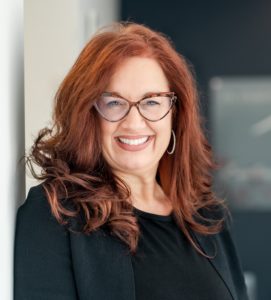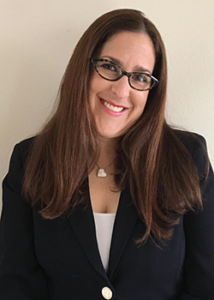In September 2023, an important news release announced a consensus document, developed by a special task force made up of optometrists who have a deep commitment to diabetic eye care. These 14 leaders worked together for nearly a year to develop what optometrists are already calling an essential handbook. Titled the Modern Fundamentals of Diabetic Retinopathy Management in Optometry, this guide presents practical guidance that primary eye care providers can turn to for simple, actionable advice on best practices when caring for patients who have diabetes.
“Our goal was to elevate the standard of care with proper management and vigilance, even given the challenges posed by today’s busy healthcare environments,” said Paul Chous, MA, OD, FAAO, who led the task force. “The group also strove to develop recommendations that would be practical to implement.” Here, we talk with two members of the task force about how they align with the new guidance by integrating handheld ERG (electroretinography) as a functional test.


Dorothy Hitchmoth, OD, FAAO, ABO, practices in a rural setting in a town with the highest median age in the state of New Hampshire. The closest ophthalmologist is 40 miles away and she has a “medical only” focus, with all retail prescriptions sent directly to two other optometry practices nearby. She also covers emergencies for a critical access hospital and a federally qualified community health center, while also proudly serving as a Veteran’s Affairs community care office. Due to the shortage of optometrists in the area, she often feels what she describes as “the sting of a healthcare system on the brink of collapse.” When asked why she got involved in the task force she says, “I, like all of the members of the task force, believe that optometrists can do better for patients who have diabetes—no matter how challenging their practice setting may be. But, realistically, we also knew that we needed to make it easy to implement.”


Julie Rodman, OD, MSc, FAAO, is also accustomed to a very busy setting, but one that’s quite different than Dr. Hitchmoth’s practice. As a professor and clinician at Nova Southeastern University in Fort Lauderdale, she’s in a more urban location. But by no means is this academic institution an easy place to work. She describes it as a “high volume, high pathology clinic” that serves a lot of uninsured patients who have end-stage disease. “We see the stuff that’s in the textbooks, which is what makes it such a great teaching facility,” she says. When asked why she got involved in the task force, Dr. Rodman referred to her commitment to teaching her students and her colleagues how to tackle big problems, such as the rising incidence of diabetes in America, according to a simple framework. “The guidelines we developed are based on five pillars, all of which are backed by evidence-based-science, but they are strikingly easy to remember and embrace,” she says. (See The Five Pillars of Diabetic Retinopathy Management in Optometry)
The pillars developed by the task force emphasize a need to balance structural testing, like OCT, with functional testing, like ERG. Why is this so important?
Dr. Hitchmoth: ERG supports clinical decision-making in seemingly straightforward, as well as in difficult cases. It helps us validate changes in patients with glaucoma, diabetes and a host of other retinal and optic neuropathies. Observation, OCT, and retinal photography are not always enough. Also, given their objective nature, I don’t believe I can always rely on visual fields, which are time consuming and not very patient-friendly. Functional testing with the RETeval® device helps us triage patients into low and high-risk categories in a matter of minutes. In a rural area, we have to be judicious and follow the patients most at risk for poor outcomes more often and those who are less likely to have progressive disease less often. In our area, functional testing adds to our confidence in looking for those patients who are more likely to have ischemic changes across the disease spectrum.
Dr. Rodman: The RETeval device is a functional test and functional tests can identify pathology earlier than we see them on structural tests.1 For instance, we may have a patient that has an abnormal DR score but has absolutely zero pathology. In these cases, especially, functional tests are super important because they’re helping us identify disease preemptively in patients even when we’re not seeing anything clinically. Also, it’s these same patients who are arguably most important to target in clinical practice because we want to prevent them from ever getting retinopathy. Showing them their DR score helps reinforce the message when we try to explain why better blood sugar control is so important and can modify the course of disease.
How do you interpret the results of the RETeval test?
Dr. Hitchmoth: It depends on which test I’m performing. I have been performing electrophysiology on patients since my time at the VA where I primarily used it to test patients with traumatic brain injuries and other complex neuro-ophthalmic conditions. In my current practice, now that there’s an easy-to-use handheld device, I have significantly expanded how I use electrophysiology. We use it across multiple disease states to differentiate symptoms and diagnoses as well as follow for change over time. We most often use it in glaucoma and diabetic retinopathy because, given our rural setting, we need to avoid burdening both patients and the healthcare system with referrals too early in the disease continuum. We use a similar approach to follow retinal vein occlusion and other retinopathies, as well as neuropathies and post-chiasmal conditions in combination with the VEP options available in the RETeval.
Dr. Rodman: I don’t consider myself an electro diagnostician. I don’t sit and try to analyze the waves. Instead, I’m looking at the numbers. In the DR protocol, the RETeval provides a simple DR Score, which is made even easier to interpret thanks to norms-based color coding. The DR report also helps me counsel patients because green usually means good and red usually means bad. It’s all presented on a number line with yellow in the middle, so you can show patients how close they are to the next category, which can help motivate them to take action sooner rather than later.
Who performs the RETeval testing in your practice?
Dr. Hitchmoth: We have a teamwork approach in our office where our entire staff is cross-trained. In most instances, our technicians perform RETeval tests. However, there are occasions that I complete the testing as well. It all depends on how many exam rooms we have running and where patients are located in the office. We see a lot of elderly patients who have difficulty moving from room to room. We try to minimize that movement to the extent possible, particularly in patients who have mobility limitations. Right now, we have only one RETeval but there may be a time when we need two. The fact that we can walk from room to room with the RETeval elevates its utility exponentially when you are caring for an elderly population.
Dr. Rodman: The RETeval in particular is a super easy test to perform. It’s a non-invasive test that’s very easy for the patient. They just sit there and look at a light. For staff, it’s super easy for anybody to run and it doesn’t take very long to do. So, to answer your question about who performs the test: it’s students, it’s my technician, it’s myself, it’s whoever’s available. They all know how to run it. We all do it.
See more stories from LKC Technologies here.



